
table of contents
- Sow in September
- Plants from A to M
- from N to Z
- Planting in September
- Plants from A to K
- from L to Z
- frequently asked Questions
Planting and sowing in September is easy if you choose the right varieties and pay attention to a few points. We show what is important.
In a nutshell
- Flowers, vegetables and fruits can be planted
- Flower bulbs can be stuck in wonderfully
- Planting and sowing is possible
- choose late varieties
- Winter varieties benefit from late sowing
Sow in September
For growing from seeds, choose fast growing and late varieties. This means you will get a yield in the same year even if you sow in September.
Tip:Raised beds are best for late sowing in September. Pre-growing in pots during the previous harvest is a good alternative.
Plants from A to M
Endive
- botanical name: Cichorium endivia
- Sowing time: June to September
- Germination time: one to two weeks
- Harvest time: August to November
- Prefer: sensible but not absolutely necessary

Lamb's lettuce
- botanical name: Valerianella locusta
- Time of sowing: July to September
- Germination time: 10 to 14 days
- Harvest time: August to November
- Prefer: sensible but not absolutely necessary
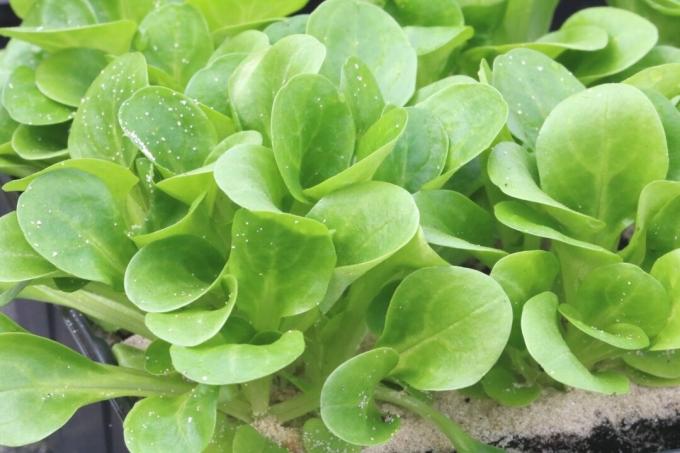
Fennel
- botanical name: Foeniculum vulgare
- Sowing time: March to September
- Germination time: 10 to 14 days
- Harvest time: May to November
- Prefer: recommended in colder regions
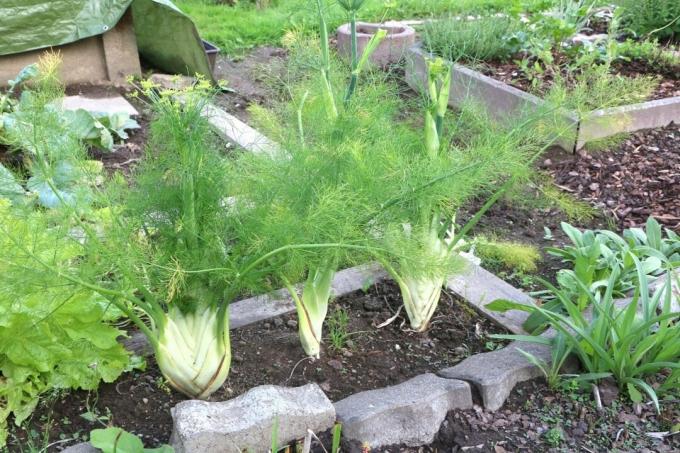
Herbs
- Examples: coriander, parsley, lovage
- Sowing time: March to September
- Germination time: 10 to 14 days
- Harvest time: May to November
- Prefer: recommended in colder regions
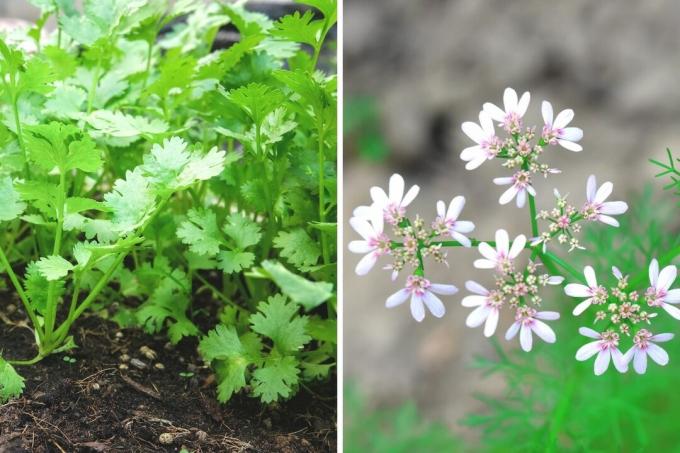
Note: Herbs can be sown throughout the entire gardening season, as long as they overwinter indoors, they can be harvested all year round.
Swiss chard
- botanical name: Beta vulgaris subsp. vulgaris
- Sowing time: April to September
- Germination time: 7 to 14 days
- Harvest time: May to October
- Prefer: makes sense in colder regions

from N to Z
Pak choi
- botanical name: Brassica rapa subsp. chinensis
- Sowing time: July to September
- Germination time: 2 to 7 days
- Harvest time: six to eight weeks after sowing
- Prefer: makes sense in colder regions

Pick salad
- botanical name: Lactuca sativa var. crispa
- Sowing time: March to September
- Germination time: one to two weeks
- Harvest time: about six weeks after sowing
- Prefer: makes sense in colder years

radish
- botanical name: Raphanus sativus var. sativus
- Sowing time: March to September
- Germination time: one to two weeks
- Harvest time: around eight weeks in autumn
- Prefer: makes sense in colder years

Beetroot
- botanical name: Beta vulgaris subsp. vulgaris Conditiva Group
- Sowing time: April to September
- Germination time: 12 to 20 days
- Harvest time: July to November
- Prefer: makes sense in colder years

spinach
- botanical name: Spinacia oleracea
- Sowing time: March to September depending on the variety
- Germination time: one to two weeks
- Harvest time: ten to twelve weeks
- Prefer: makes sense in colder years

Planting in September
There are a surprising number of plants that can be planted in September. Several factors are important when planting. These include:
- Prepare the soil accordingly
- Choose a frost-free day
- Loosen the substrate well
Note: The advantage of starting the plants in September is that the plants put their reserves into the development of the roots and thus grow quickly.
Plants from A to K
Blackberries
- botanical name: Rubus
- Location: sunny to partially shaded, protected
- Substrate: loose, moderate nutrient content
- Planting time: spring after the last frost, autumn before the first frost
- Harvest time: July to October

blueberries
- botanical name: Vaccinium myrtillus
- Location: full sun and sheltered from the wind
- Substrate: azalea or rhododendron earth
- Planting time: September to November
- Harvest time: July to September

Raspberries
- botanical name: Rubus idaeus
- Location: sunny and sheltered from the wind
- Substrate: no special requirements
- Planting time: can be planted on frost-free days throughout the gardening season
- Harvest time: July to October, depending on the variety
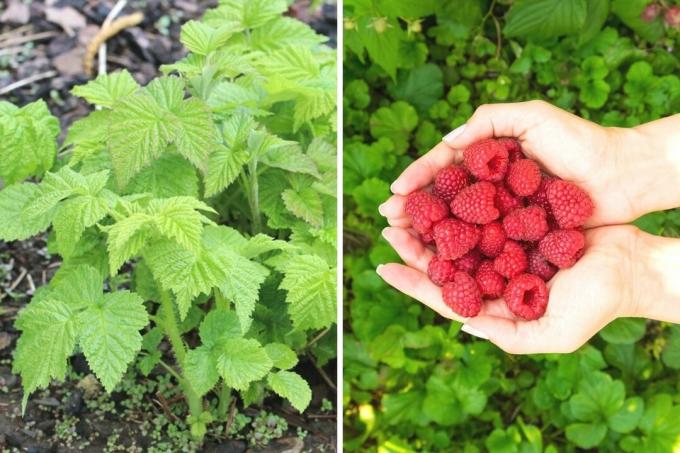
EvergreenShrubs
- Examples: ivy, boxwood, wintergreen oak, cherry laurel
- Planting time: September to October
- Location: depending on the tree species, full sun to shady
- Substrate: must be adapted to the species
- Flowering time: depending on the species

Currants
- botanical name: Ribes
- Location: sunny to partially shaded and sheltered from the wind
- Substrate: humus, moist, loose, rich in nutrients
- Planting time: September to October
- Harvest time: depending on the variety from around June

Crocuses
- botanical name: Crocus
- Location: sunny to partially shaded
- Substrate: compost-based potting soil
- Planting time: August to November
- Flowering time: depending on the species, March to October

from L to Z
magnolia
- botanical name: Magnolia
- Location: sunny to partially shaded
- Substrate: heavy, slightly moist, rich in nutrients
- Planting time: spring or autumn to October
- Flowering period: March to May

Conifers
- Examples: fir, pine, Swiss stone pine
- Location: depending on the species, sunny to shady
- Substrate: depending on the species
- Planting time: August to October
- Flowering time: flowering variants mostly from March to April

Daffodils
- botanical name: Narcissus
- Location: sunny
- Substrate: moist and rich in nutrients
- Planting time: September to October
- Flowering period: February to May, depending on the variety

Fruit trees
- Examples: apple, pear, cherry, plum
- Location: sunny to partially shaded, airy, sufficient distance to other plants
- Substrate: loosened garden soil
- Planting time: Autumn is ideal, but spring and summer are also possible
- Harvest time: depending on the species

snowdrop
- botanical name: Galanthus
- Location: bright and under larger plants
- Substrate: rich in humus, loose, moist
- Planting time: August to October
- Flowering period: January to February

Gooseberries
- botanical name: Ribes uva-crispa
- Location: no blazing sun but sunny to partially shaded
- Substrate: nutrient-rich, loose, slightly acidic and humic
- Planting time: spring after the last frost or in autumn before the first frost
- Harvest time: June to August

Tulips
- botanical name: Tulipa
- Location: full sun
- Substrate: well-drained, moderately rich in nutrients and not too moist
- Planting time: September to the end of November
- Flowering time: around March to May, depending on the variety
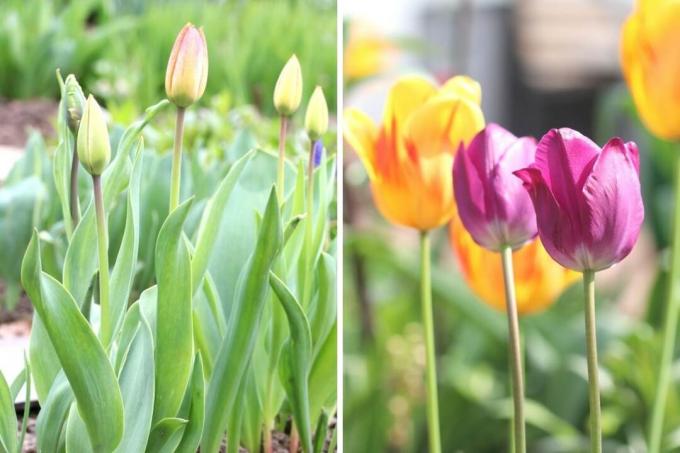
frequently asked Questions
In a raised bed, the soil temperature is around eight degrees Celsius higher than in a normal bed. As a result, seeds germinate faster, growth is accelerated and the yield can be maintained for longer, since frost plays a subordinate role due to additional protection.
That depends on the particular crop. Of course, the right temperature and sufficient humidity as well as the appropriate substrate are important.
After heavy eaters, no further plants with a high nutrient content should be planted or sown in the bed. Otherwise there will be no harvest and only very little. In addition, the soil is heavily polluted.
Depending on the particular plant, the soil must be loosened in advance, freed from other growths and, if necessary, fertilized. Fast-growing weak consumers usually do not need any of these measures. This is especially true if plants have already grown at this point. This loosens the soil deeply.
While the seeds and plants planted in spring and summer sprout comparatively quickly, the gradually decreasing temperatures can become problematic in September. Pre-grown plants are therefore a good alternative to direct sowing.

